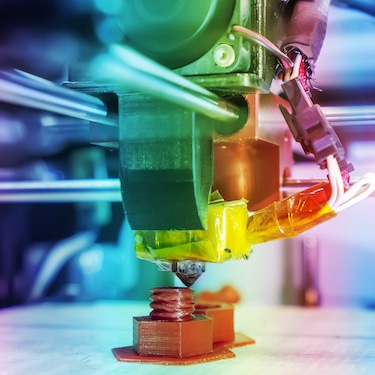When you think of a hospital printing organ implants and creating custom joint replacements in a matter of hours, you might be picturing a scene decades from now. Thanks to 3D printing, that reality is only a handful of years away.
This is just one example of the potential impact of 3D printing. From one-of-a-kind human joints to mass-produced customized prosthetics, 3D printing could revolutionize medical device manufacturing. In the FDA’s own words: “When it comes to 3D printing, you might say that the future is already here.”
What makes 3D printing so different? What are the possibilities in the medical device industry? And why do manufacturers need digital tools like a Manufacturing Execution System (MES) to be successful?
The Advantages of Additive
3D printing in manufacturing, also called additive manufacturing, is becoming a key component of agile production in life sciences. Few industries require the level of customization that medical devices often involve, and 3D printing can be the right tool to create one-of-a-kind devices for a wide variety of applications.
3D printing allows designers to make changes without the need to set up additional equipment or tools. Designs can originate from many sources, the most common being CAD drawings or MRIs. This level of flexibility has enabled medical manufacturers to make unique prosthetics, implants, and more that are matched to a patient’s specific anatomy. The ability to make these unique devices helps doctors and surgeons treat their patients more effectively, and can save money for the manufacturer.
State of the Business
The current administration’s new package of aid for the nation’s manufacturing Small to Mid-sized enterprises, called Additive Manufacturing Forward, intends to promote innovation and the adoption of additive manufacturing to address several problems – including blocked supply chains and off-shored manufacturing jobs. . As with other manufacturing equipment, the FDA regulates the medical devices being produced, but does not regulate 3D printers themselves. This means that manufacturers can use 3D printing anywhere they see fit, but they must meet the regulatory standards for the finished product and adhere to current, good manufacturing processes. The FDA maintains an active web page to promote knowledge and collaboration in 3D printing research and development, which you can link to here.
In some applications, the 3D printer is the production line by itself, meaning that the product can be made solely from raw goods and 3D printers. In other applications, a product might be produced by standard production means, then customized by including a 3D printed part. This allows easy and rapid customization within a production line.
Examples of 3D Printing Applications
- Surgical instruments: hemostats, scalpel handles, medical clamps, forceps, retractors, and more; 3D printers can produce virtually every tool surgeons need for an operation. (source)
- Bioprinting living organs and tissue: “Bioprinting” is the process of depositing living cells into specific shapes to form tissues and organs. The cells used in this process can be taken directly from the patient, reducing the chance of their body rejecting the implant. (source)
- Orthopedic implants: 3D printing has the potential to revolutionize the experience of patients healing from joint replacements or broken bones. The benefits are similar to prosthetics, in that they can be customized to fit the patient’s unique shape. (source)
- Anatomical models: MRI and CT scans can be processed, modeling the patient’s anatomy and converting the files to an STL format to be printed. They can be used simply for educational purposes, or for more specialized uses. 3D printed models of a patient’s anatomy gives doctors a finely detailed, holistic understanding of their patient’s health. For surgeons, these models can improve their preoperative planning and lead to a better overall result. (source)
The Role of Manufacturing Execution Systems in 3D Printing
The FDA requires manufacturers to manage and track all related operations around the 3D printer, including raw materials. In an industry so complex and regulated, manufacturers will need digital systems like MES to stay in control. This is especially so in a hybrid production environment that combines conventional manufacturing with additive manufacturing.
According to leading 3D printer marketplace Aniwaa, manufacturers often struggle to exploit the full potential of their hardware. This is because they “have not efficiently organized their AM production workflow: information moves awkwardly from one system to another, machines operate with half-empty print beds, and finished parts are slow to reach their final destination.”
These are exactly the details that a Manufacturing Execution System (MES) is designed to manage and coordinate. 3D printing is inherently digital, typically originating from CAD designs. MES extends that digital capability across all processes, enabling manufacturers to manage, standardize, and track production down to the precise level required for the most complex medical devices.
Conclusion
We’re only at the dawn of 3D printing in medical devices, but the advantages are so great that the field is growing fast. Top medical innovators plan to integrate 3D printing into their production throughout the next decade. In order for manufacturers to manage and regulate these applications, they will need an MES that is agile and easy to integrate not only with 3D printers but with other production-related systems and even external suppliers and partners.
The medical device industry will look very different 10 years from now, led by innovative technologies such as 3D printing. Is your organization ready to join the frontier of medical innovation? Find out how an MES will give you the competitive edge to lead in this industry.






